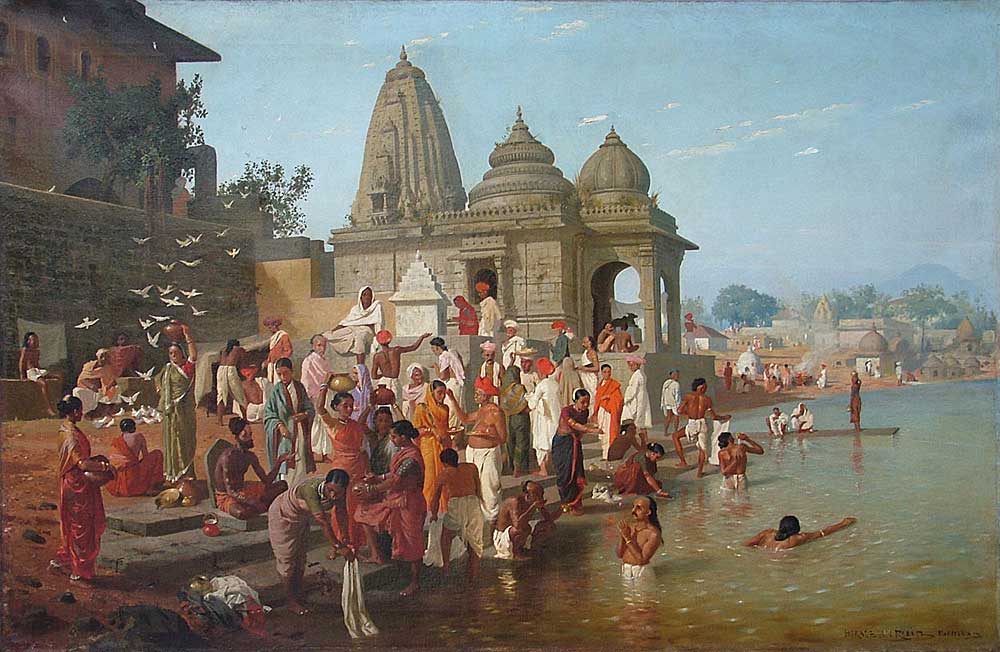Archive
Archive IndexHorace van Ruith
Worshipers at the Trimbakeshwar Temple
-
Oil on canvas
152 x 102 cms
Circa 1879 - 1884
Signed lower right 'Horace van Ruith, Bombay'
Horace van Ruith (1839 – 1923)
Worshipers at the Trimbakeshwar Temple in the town of Trimbak, in the Nasik District of Maharashtra dedicated to Lord Shiva
The painting, which might be considered Van Ruith masterwork, shows in the foreground groups of pilgrims bathing and following their various religious rituals, the Temple is placed in the centre of the painting and links the various complex compositional aspects of the painting. The artist has brilliantly captured the activity on the ghat. Beyond the temple he has painted a most lyrical landscape and in the back ground the hills surrounding Nasik. A label on the stretcher states: ...at Nasik, Horace Van Ruith Bombay. We believe the temple depicted in the painting is the ancient Hindu temple Trimbakeshwar in the town of Trimbak, in the Nasik District of Maharashtra. It is dedicated to Lord Shiva and is one of the twelve Jyotirlingas. It is located at the source of the Godavari River, the longest river in peninsular India. The Godavari River, which is considered sacred within Hinduism, originates from the Bramhagiri mountains and meets the sea near Rajahmudry. Kusavarta, a kund is considered the symbolic origin of the river Godavari, and revered by Hindus as a sacred bathing place.
As the work is signed Bombay it would most probably have been painted in his studio in the city while he was there between 1879 and 1884.
Probably of Russian origin, Van Ruith was born in Capri and became a professional painter who specialized in portraiture, landscapes and genre scenes in oil and watercolour. Although subsequently based in England he spent several years working in Italy. He visited Bombay sometime between 1879 and 1884 and is known to have established a studio in the city. He painted a number of works portraying local people, especially those in various trades – coolies at work, cotton cleaner, a cord maker and street musicians. On his return to London he took part in the Colonial and Indian Exhibition opened by Queen Victoria in 1886, when he showed a number of similar subjects. It also included the panoramic view from Malabar Hill across Back Bay. Her son the Duke of Connaught noted of him in a letter to the Queen that “no man understands the peculiar characteristics of Indian life better than he does and he is a very clever artist.”
After this he exhibited regularly in England including the Royal Academy exhibitions in London, where he showed “Money Changer, Bombay” in 1900. He almost certainly visited India again, probably around 1900, for he also worked in Baroda at the invitation of the Gaekwad. Despite his long life and obviously considerable output his pictures are rare today.
Reference: Bombay to Mumbai published by Marg Publications 1997
